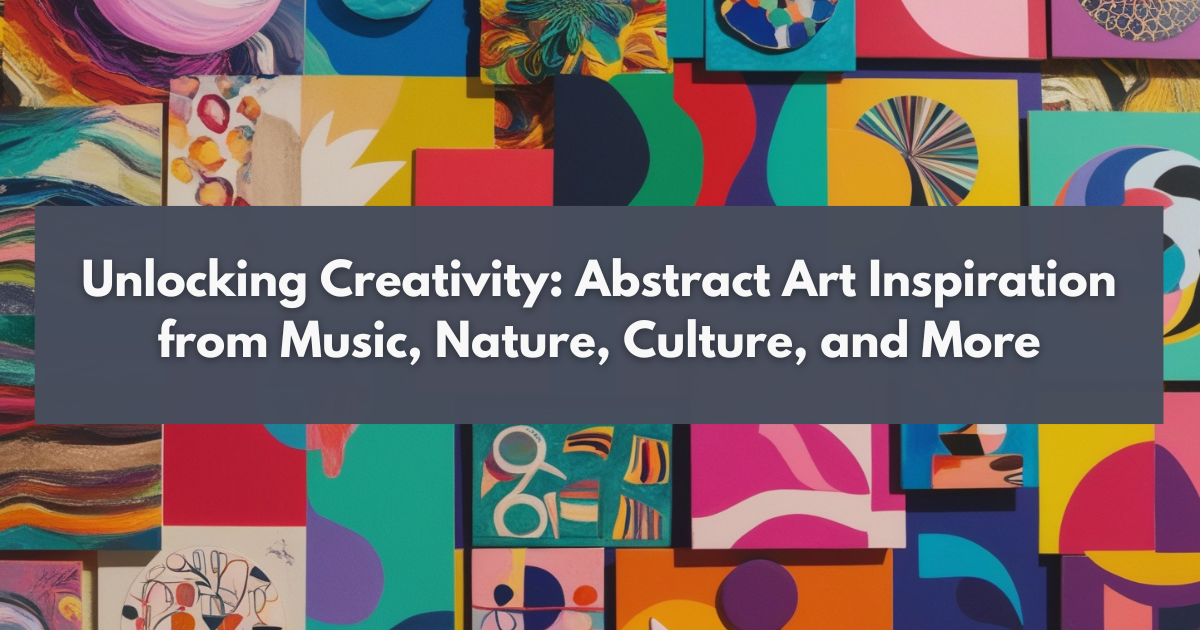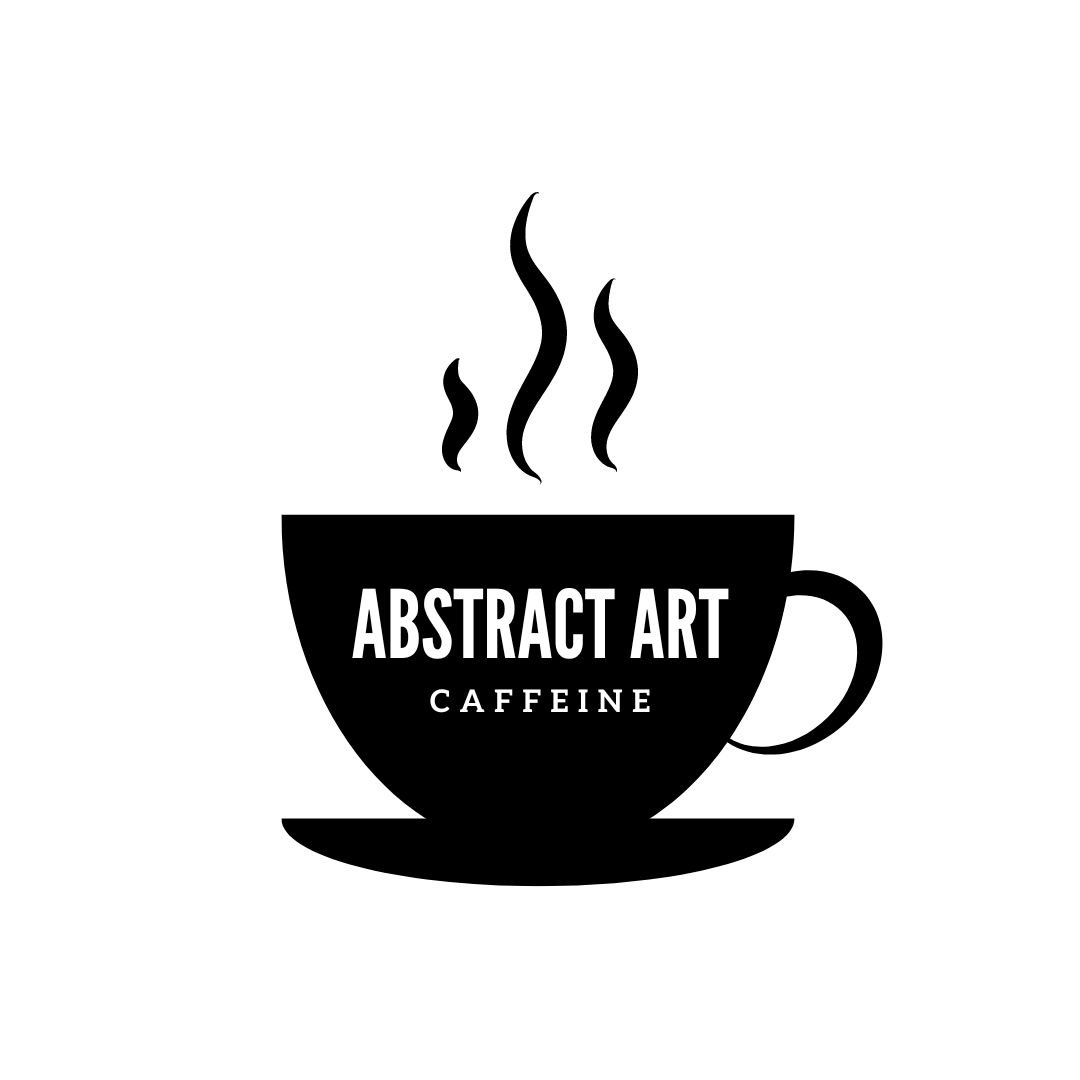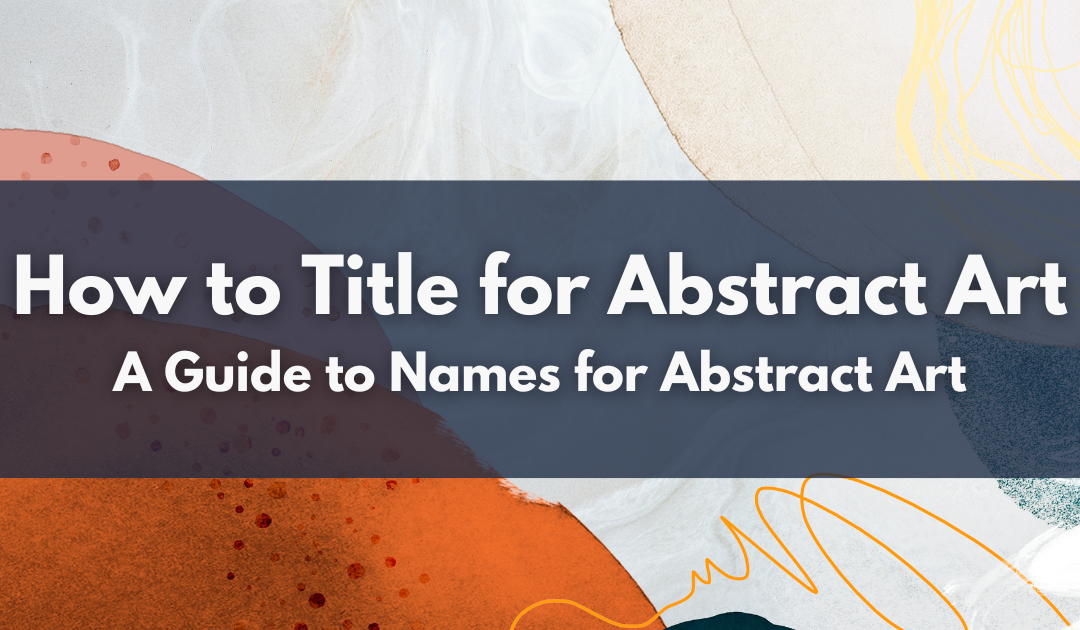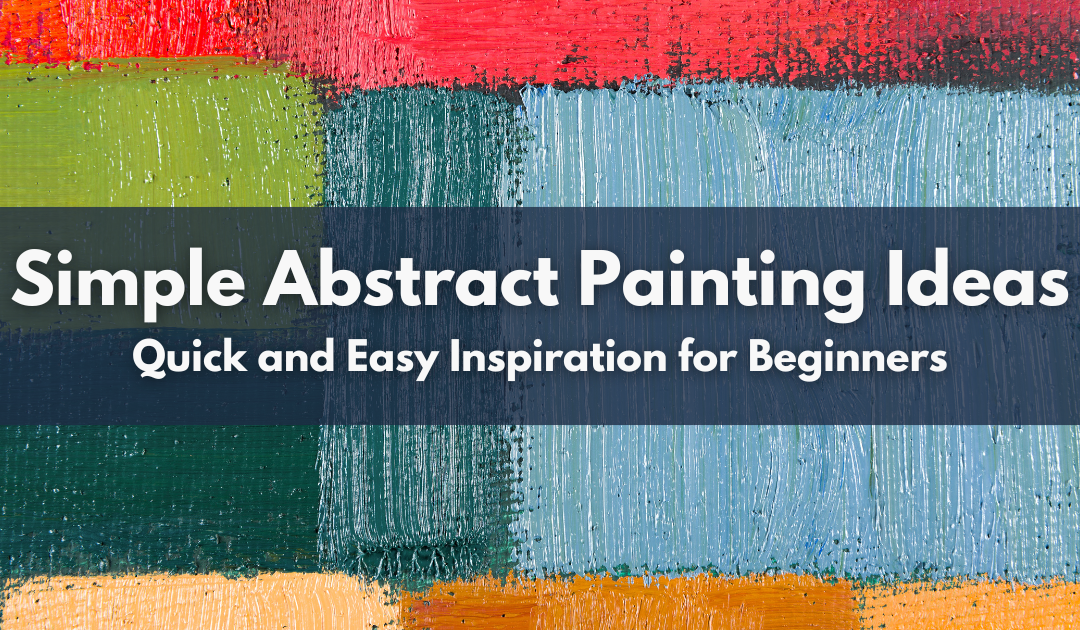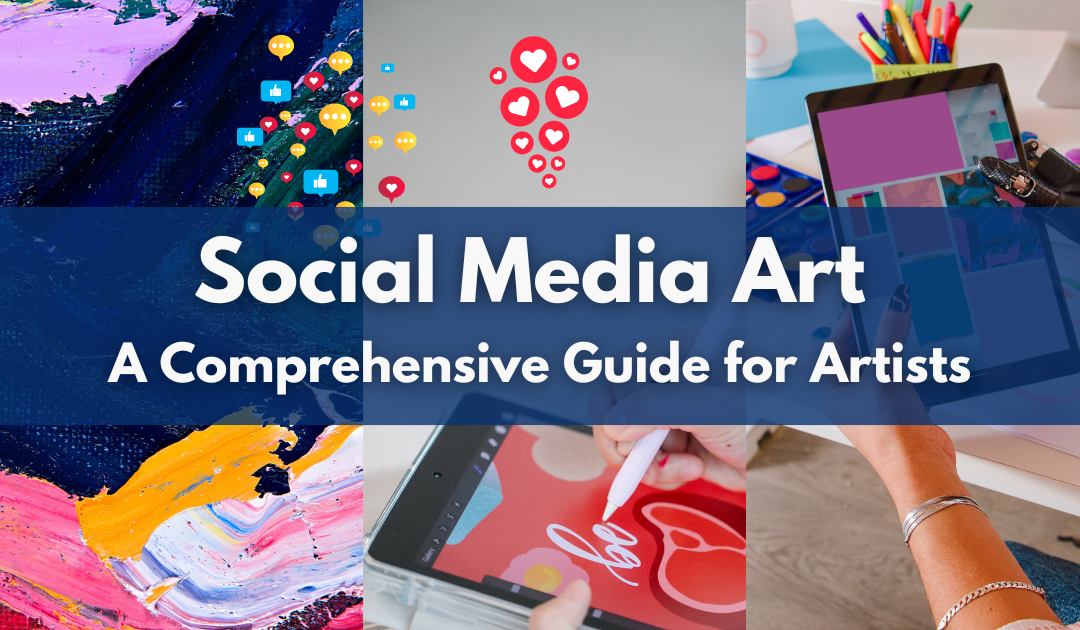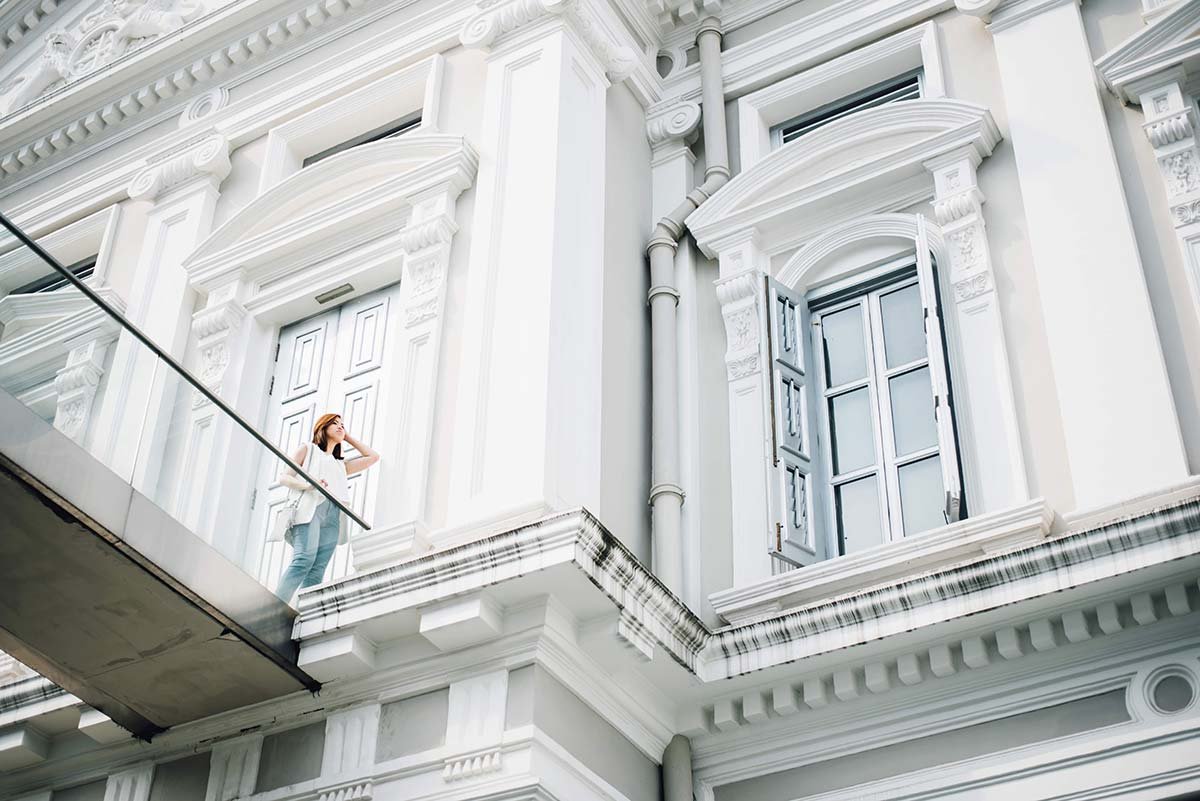Abstract art inspiration can come from anywhere and everywhere.
This form of art is a freedom from reality, to create works that speak to emotions, ideas, and experiences in a way that’s never been seen before.
Whether you’re an experienced artist or just starting out in abstract art, finding inspiration is key to unlocking your creativity and your artistic voice.
In this article, we’ll explore the many sources of abstract art inspiration, and how music, nature, culture, and more can spark your imagination and fuel your art journey.
We’ll also cover practical tips for generating ideas and getting over creative blocks so you can create abstract art that’s personal and beautiful.
If you’re just starting your creative journey as an artist, be sure to check out our insightful post on abstract painting ideas for beginners. It’s the perfect guide to help you unlock your creative potential.
So grab your brush, open your mind, and let’s get started on this inspiring journey through abstract art.
The Essence of Abstract Art Inspiration

Abstract art inspiration is the oxygen of creativity in this art form.
Unlike representational art which aims to depict recognizable objects or scenes, abstract art uses colors, shapes, and textures to convey emotions, concepts or experiences.
This freedom from literal representation means artists can draw inspiration from anywhere.
The beauty of abstract art inspiration is that it can turn the ordinary into the extraordinary.
A passing feeling, a snippet of overheard conversation or the play of light on a surface can be a starting point for abstract art.
And abstract art allows artists to combine multiple sources of inspiration to create complex, multi-layered works that work on many levels.
Abstract Art Ideas and Inspiration

Finding ideas for abstract art can be tough, but with the right approach, inspiration is everywhere. Here are some tips to get you going and overcome artist’s block:
- Keep an inspiration journal: Carry a small notebook or use your phone to jot down ideas, sketch quick impressions (like doodling), or take photos of interesting textures and patterns you see in daily life.
- Practice mindfulness: Take time to really look at your surroundings. Notice colors, shapes, and textures in everyday objects and scenes.
- Try different mediums: Work with unfamiliar materials or techniques. The unknown can lead to new ideas and abstract expressions.
- Set creative constraints: Sometimes limiting yourself can be the best way to get creative. Try abstract art with two colors or one shape.
- Go beyond visual art: Don’t just look at other art. Read poetry, listen to music, watch dance or cultural performances to stimulate your imagination.
Remember, the key to finding abstract art inspiration is to remain open and curious.
For more in-depth ideas and examples of abstract art painting, visit our post on abstract art painting styles.
By exploring different sources of inspiration, you’ll enrich your artistic practice and develop a unique visual language that speaks to your personal experiences and perspective.
Inspiration for Abstract Art from Music
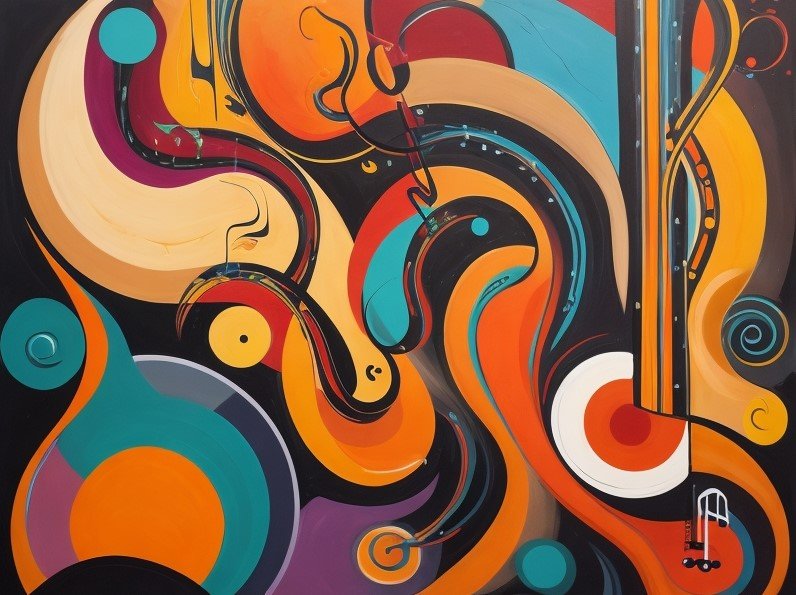
Music has long been a powerful source of abstract art inspiration.
The way music moves us emotionally and physically can translate beautifully into visual art.
Abstract art inspired by music often captures the rhythm, melody, and mood of a piece, translating auditory experiences into visual ones.
How music can influence abstract art
- Rhythm and movement: The beat and tempo of music can be represented through repetitive patterns or dynamic brush strokes.
- Melody and harmony: Different musical notes and harmonies can be associated with specific colors or shapes.
- Emotion and mood: The feelings evoked by a piece of music can be expressed through color choices and composition.
Case study: Wassily Kandinsky’s synesthesia-inspired works
Wassily Kandinsky (1866-1944) was a Russian artist and art theorist and one of the founders of abstract art.
Kandinsky’s unique ability to perceive colors when hearing music, a condition known as synesthesia, profoundly influenced his art.
His work, characterized by vibrant colors and abstract forms, laid the foundation for non-representational painting and continues to inspire artists worldwide.
Wassily Kandinsky, often considered the pioneer of abstract art, experienced a neurological phenomenon called synesthesia, where he could “see” colors when he heard music. This unique perception greatly influenced his art, leading to vibrant, musical compositions on canvas.
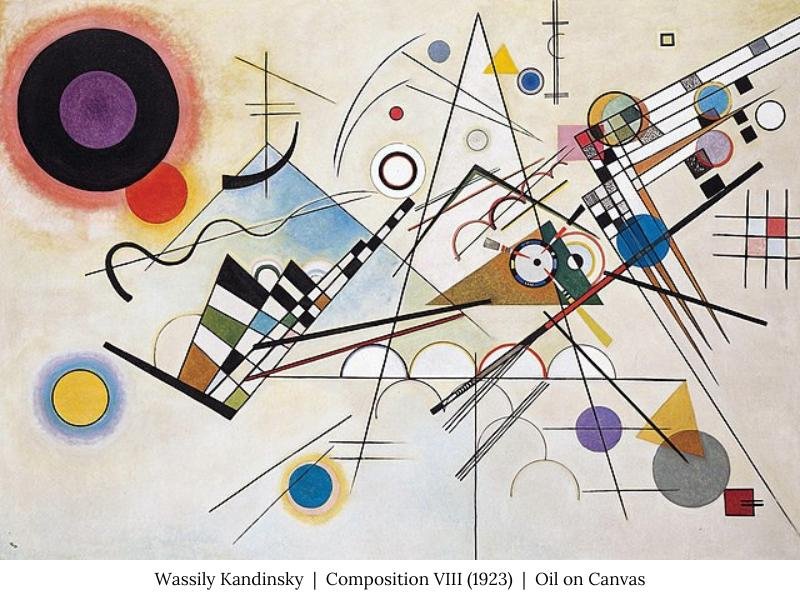
Image Source: Wikimedia Commons
For example, Kandinsky’s painting “Composition VIII” (1923) is thought to be inspired by Arnold Schoenberg’s atonal music. The geometric shapes and bold colors in the painting reflect the revolutionary nature of Schoenberg’s compositions.
Techniques for creating abstract art inspired by music
- Color association: Assign colors to different instruments or musical elements.
- Gestural painting: Use brush strokes to mimic the movement of a conductor or the rhythm of the music.
- Shape and form: Represent different musical notes or instruments with specific shapes.
- Layering: Build up layers of paint or collage elements to represent the complexity of a musical piece.
Examples of contemporary artists inspired by different music genres
- Melissa McCracken: Another synesthetic artist, McCracken creates colorful abstract paintings based on her perception of music.
- Mark Rothko: While not directly inspired by specific songs, Rothko’s color field paintings evoke the emotional depth often associated with classical music.
- Jen Stark: Her psychedelic, geometric artworks are often inspired by electronic and experimental music.
By exploring the connection between music and visual art, you can unlock new realms of abstract art inspiration and create pieces that resonate on both visual and auditory levels.
Abstract Art Inspired by Nature

Nature has been a source of abstract art inspiration for centuries.
The organic shapes, vibrant colors, and intricate patterns found in the natural world provide endless ideas for abstract compositions.
The role of natural elements in abstract art
Natural elements can be abstracted and incorporated into artwork in various ways:
- Shapes and forms: The curves of a river, the jagged edges of mountains, or the spiral of a seashell can all be simplified into abstract forms.
- Colors: The vibrant hues of a sunset, the subtle tones of a forest, or the bold contrasts of a tropical flower can inspire color palettes.
- Textures: The roughness of tree bark, the smoothness of a pebble, or the delicacy of a spider’s web can be translated into textural elements in abstract art.
- Patterns: The symmetry of a snowflake, the fractal patterns in ferns, or the stripes of a zebra can be abstracted into repeating motifs.
How to observe and incorporate patterns, colors, and textures from nature
- Take nature walks: Spend time outdoors observing and sketching natural elements that catch your eye.
- Macro photography: Use close-up photography to capture intricate details in plants, insects, or minerals.
- Collect natural objects: Gather leaves, stones, or shells to use as reference or even incorporate directly into mixed media artworks.
- Study natural science illustrations: Botanical drawings, geological diagrams, or microscopic images can provide inspiration for abstract compositions.
Color palettes inspired by landscapes and natural phenomena
- Desert landscapes: Warm oranges, sandy yellows, and cool purples of a sunset over dunes.
- Tropical rainforests: Lush greens, vibrant reds of exotic flowers, and deep browns of tree trunks.
- Ocean scenes: Various shades of blue, aqua, and teal, with white foam and sandy beiges.
- Autumn foliage: Rich reds, oranges, yellows, and browns of changing leaves.
Environmental issues as inspiration for abstract art
Many contemporary artists use abstract art to raise awareness about environmental issues:
- Climate change: Artworks depicting melting glaciers or rising sea levels through abstract forms.
- Pollution: Using found objects or representing contamination through color and texture.
- Deforestation: Abstract representations of disappearing forests or fragmented habitats.
- Biodiversity loss: Artworks that abstractly depict the interconnectedness of ecosystems.
Examples of famous abstract artists who draw inspiration from nature
- Georgia O’Keeffe: Known for her abstract interpretations of flowers and landscapes.
- Hilma af Klint: Created abstract works inspired by natural and spiritual themes.
- Pat Steir: Her “Waterfall” series abstracts the movement and energy of cascading water.
- Andy Goldsworthy: Although not strictly a painter, his environmental art abstracts natural elements in situ.
By looking to nature for abstract art inspiration, you can create work that captures the beauty of the natural world and expresses your unique perspective on our environment and our place within it.
Cultural Influences in Abstract Art
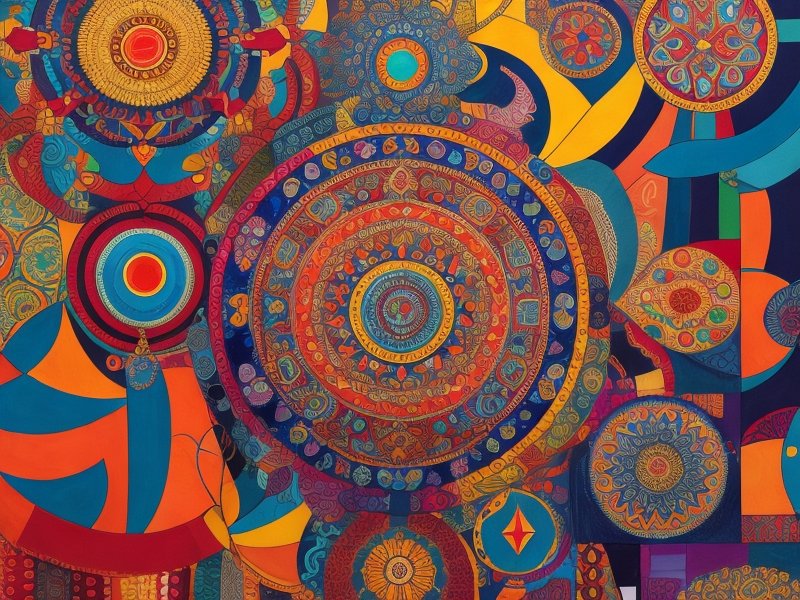
Abstract art inspiration often draws from the rich cultural heritage of the world.
Cultural references can provide a wealth of symbols, colors, patterns, and concepts to abstract art ideas & inspiration and use in your work.
This cross-pollination of ideas not only produces visually stunning pieces but also promotes cultural understanding and appreciation.
How different cultures can inspire abstract art
- Traditional art forms: Ancient cave paintings, indigenous art, or classical Asian brush paintings can all serve as starting points for abstraction.
- Rituals and ceremonies: The colors, movements, and symbolism of cultural practices can be translated into abstract compositions.
- Mythology and folklore: Stories and characters from different cultures can be represented through abstract forms and colors.
- Architecture: The geometric patterns and structural elements of cultural landmarks can inspire abstract designs.
Exploring cultural symbols, colors, and patterns in abstract art
- Symbols: Abstract interpretations of cultural symbols like the yin-yang, mandala, or tribal motifs.
- Color symbolism: Using colors that have specific meanings in different cultures, such as red for luck in Chinese culture or purple for royalty in Western traditions.
- Textile patterns: Drawing inspiration from traditional fabrics like African kente cloth, Indian saris, or Japanese kimonos.
- Calligraphy: Abstracting the flowing lines and forms of various writing systems.
How Cultural experiences shape an artist’s perspective
Our personal experiences of different cultures, whether through travel, study or heritage can have a huge impact on an artist’s work.
These experiences can result in the mixing of cultural elements and personal expression in abstract art.
Examples of culturally-inspired abstract art from around the world
- Sonia Delaunay: Her abstract works were influenced by the vibrant colors and patterns of Russian folk art.
- Ibrahim El-Salahi: Combines African, Arab, and Western influences in his abstract paintings.
- Yayoi Kusama: Her polka dot motifs draw from both Japanese culture and her personal experiences.
- Frank Stella: Some of his geometric abstractions were inspired by Islamic art and architecture.
Case studies of abstract art inspired by specific cultural themes
- Aboriginal dot paintings: Contemporary Aboriginal artists like Emily Kame Kngwarreye have adapted traditional techniques to create abstract works.
- Zen-inspired minimalism: Artists like Agnes Martin drew inspiration from Eastern philosophy to create serene, minimalist abstractions.
- African-American quilting traditions: Artists like Alma Thomas incorporated elements of African-American quilt designs into their abstract paintings.
By exploring cultural influences, you can add depth and meaning to your abstract art, creating works that not only please the eye but also tell stories and bridge cultural divides.
Abstract Art Inspired by Poetry
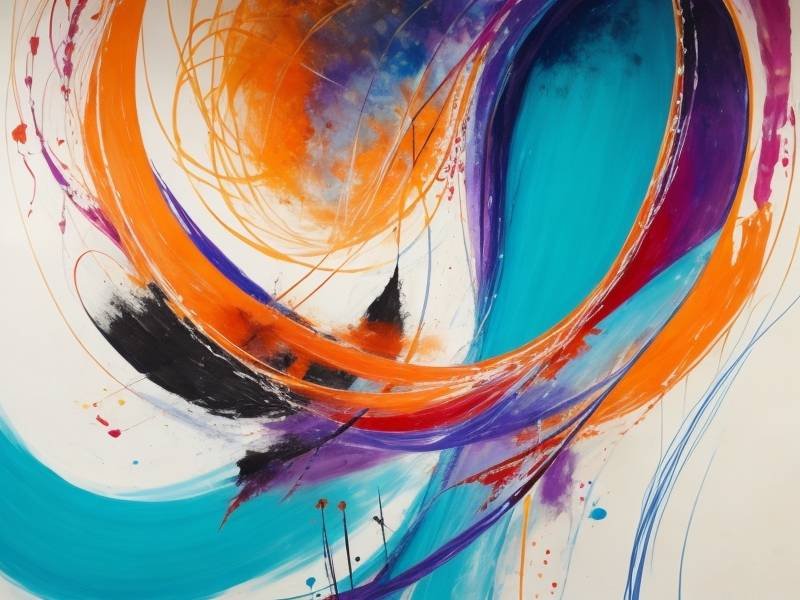
Poetry and abstract art both have the unique ability to evoke emotions and ideas without being literal.
This is why poetry is a great source of abstract art inspiration.
By translating the imagery, rhythm, and emotions of the poem into visual form artists can create deeply expressive abstract work.
Connection between poetry and abstract art
Both poetry and abstract art:
- Use metaphor and symbolism to convey complex ideas
- Emphasize emotion and mood over literal representation
- Allow for multiple interpretations by the reader/viewer
- Often break traditional rules of structure and form
Visualizing metaphors and imagery from poems
- Color associations: Use colors to represent the mood or key images in a poem.
- Abstract forms: Create shapes or lines that echo the rhythm or flow of the verses.
- Texture: Incorporate textures that reflect the tactile imagery in the poem.
- Composition: Arrange elements on the canvas to mirror the structure of the poem.
Techniques for translating poetic themes and emotions into abstract art
- Word mapping: Create a visual map of attracted words or phrases from the poem, then use this as a basis for your composition.
- Emotional response: Focus on the feelings the poem evokes in you, and express these through color and form.
- Rhythm and repetition: Use repeated elements or patterns to echo the rhythm of the poem.
- Layering: Build up layers of paint or collage elements to represent the multiple meanings or interpretations in the poem.
Collaborative projects between poets and abstract artists
Many artists and poets have collaborated to create powerful works that blend visual and verbal expression:
- Frank O’Hara and Abstract Expressionists: O’Hara’s poetry was deeply influenced by and influential to painters like Willem de Kooning and Jackson Pollock.
- Sonia Delaunay and Blaise Cendrars: Delaunay created abstract paintings to accompany Cendrars’ poem “La Prose du Transsibérien”.
- Contemporary collaborations: Many current artists and poets work together on multimedia projects that combine abstract art and poetry.
Examples of abstract art pieces inspired by famous poems
- Cy Twombly’s “Analysis of the Rose as Sentimental Despair”: A series inspired by Rainer Maria Rilke’s poems. Check his works here.
- Helen Frankenthaler’s “The Bay”: While not directly based on a specific poem, Frankenthaler’s work was often inspired by lyrical, poetic ideas.
- Joan Miró’s “Photo: This Is the Color of My Dreams”: This painting incorporates text in a poetic, abstract manner.
By exploring the connection between poetry and abstract art, you can create works that resonate on both visual and verbal levels, adding depth and layers to your artistic expression.
Fashion as a Source of Abstract Art Inspiration
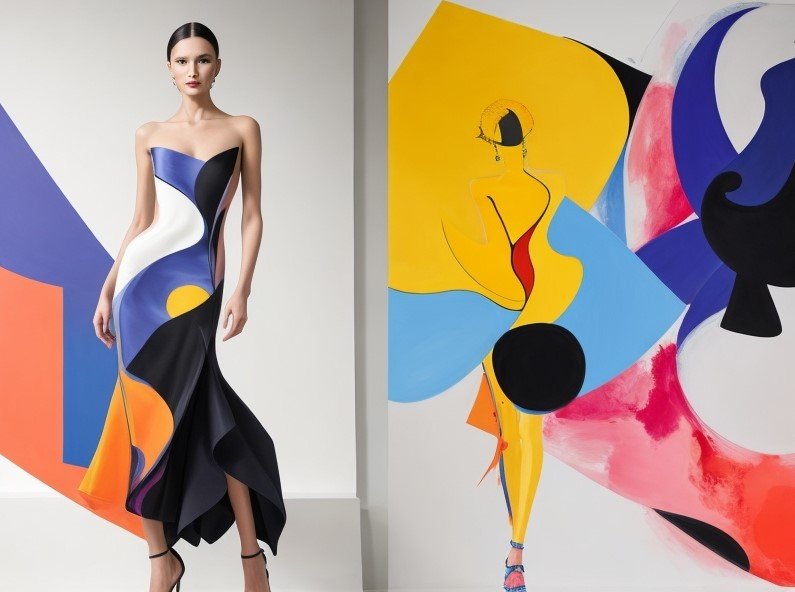
Fashion with its ever-changing trends, bold colors, and innovative designs can be a surprisingly good source of abstract art inspiration.
The world of fashion shares many elements with abstract art, including a focus on color, form, texture, and composition.
How fashion trends and styles can influence abstract art
- Color palettes: Seasonal color trends in fashion can inspire new color combinations in abstract art.
- Patterns and prints: Textile designs, from bold geometrics to subtle textures, can be abstracted into paintings.
- Silhouettes and forms: The shapes created by clothing on the human body can inspire abstract compositions.
- Textures: The variety of fabrics used in fashion can be translated into textural elements in abstract art.
Using colors, textures, and patterns from fashion in abstract art
- Color blocking: Inspired by color block fashion trends, create abstract compositions with large areas of solid colors.
- Textile-inspired textures: Use techniques like impasto or collage to recreate the textures of different fabrics.
- Pattern abstraction: Take a fashion print and deconstruct it into its basic elements, then rearrange these into an abstract composition.
- Layering: Mimic the layering of clothing by building up layers of paint or mixed media elements.
Abstract art in fashion design and vice versa
The relationship between fashion and abstract art is often reciprocal:
- Wearable art: Some fashion designers create garments that are essentially abstract artworks in themselves.
- Fabric prints: Abstract artists sometimes collaborate with fashion designers to create unique textile prints.
- Runway presentations: Fashion shows often incorporate elements of performance art and installation, blurring the lines between fashion and abstract art.
The influence of art movements on fashion and abstract art
Many art movements have had a significant impact on both fashion and abstract art:
- Cubism: Influenced both abstract art and fashion designers like Coco Chanel.
- Pop Art: Inspired bold, graphic designs in both art and fashion.
- Minimalism: Led to streamlined aesthetics in art, fashion, and design.
Notable abstract artists who draw inspiration from the fashion industry
- Sonia Delaunay: Created both abstract paintings and fashion designs, seeing them as interconnected forms of art.
- Yves Klein: While primarily known for his monochrome blue paintings, Klein also designed dresses in his signature blue.
- Piet Mondrian: His abstract compositions directly inspired Yves Saint Laurent’s famous Mondrian dresses.
When you look to fashion for abstract art inspiration you can create work that is not only beautiful but also connected to the ever-changing world of style and design. This can lead to new color combinations, interesting textures, and dynamic compositions in your abstract art.
Jackson Pollock: A Case Study in Abstract Inspiration
Jackson Pollock was a key figure in the Abstract Expressionist movement and changed the way artists approach abstract inspiration.
His drip painting technique and focus on the act of painting itself opened up new possibilities for abstract expression.
Check Pollock’s Artworks here.
Pollock’s unique approach to abstract expressionism
Pollock’s approach was characterized by:
- Action painting: Emphasizing the physical act of painting over pre-planned composition.
- All-over composition: Distributing paint across the entire canvas without a central focal point.
- Use of unconventional tools: Employing sticks, trowels, and even basting syringes to apply paint.
- Large-scale works: Creating immersive paintings that envelop the viewer.
The influence of Pollock on contemporary abstract artists
Pollock’s revolutionary approach continues to inspire artists today:
- Emphasis on process: Many contemporary artists focus on the act of creation itself as a form of expression.
- Exploration of materials: Pollock’s experimentation with different paint consistencies and application methods encourages artists to push the boundaries of their mediums.
- Scale and immersion: Large-scale abstract works that create an immersive experience for viewers remain popular.
- Gesture and movement: The dynamic, gestural quality of Pollock’s work influences artists exploring motion and energy in abstract art.
Techniques inspired by Pollock’s drip painting method
- Controlled chaos: Practice allowing randomness while maintaining some level of control over the composition.
- Layering: Build up multiple layers of paint to create depth and complexity.
- Alternative tools: Experiment with unconventional painting tools to create unique marks and textures.
- Full-body painting: Engage your whole body in the painting process, moving around the canvas as Pollock did.
Finding your own “Pollock-esque” inspiration
- Embrace spontaneity: Allow yourself to create without a preconceived end result in mind.
- Focus on rhythm: Pay attention to the natural rhythms of your body and translate them into your work.
- Explore your environment: Like Pollock, who was inspired by the energy of New York City, find inspiration in the rhythms and patterns of your surroundings.
- Push boundaries: Don’t be afraid to break conventional rules of composition or technique in your abstract art.
Inspirational Abstract Art: Techniques and Tips
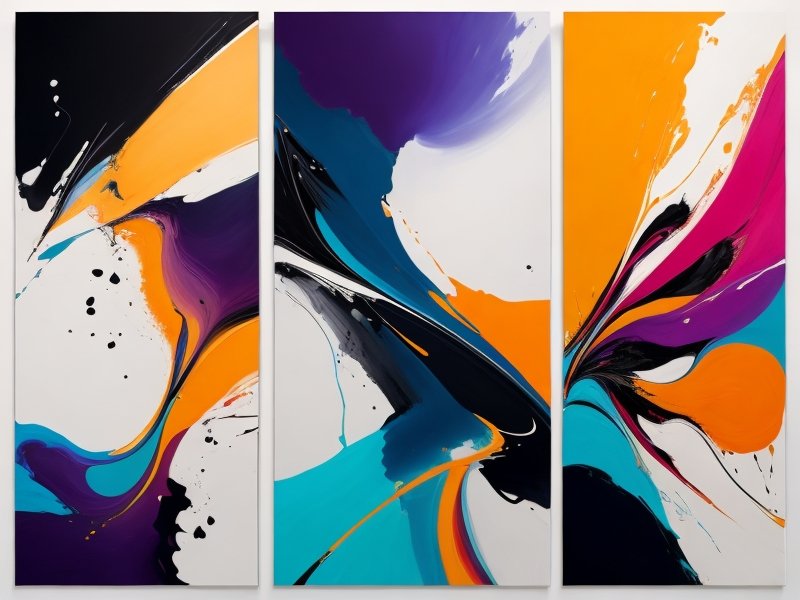
Creating inspirational abstract art requires not only inspiration but also technique and practice. Here are some tips and techniques to help you develop your abstract art skills:
Techniques for creating abstract art
- Gestural painting: Use broad, sweeping brushstrokes to create dynamic, expressive compositions.
- Color field painting: Create large areas of solid color to explore the emotional impact of color relationships.
- Collage and mixed media: Incorporate different materials to add texture and depth to your abstract works.
- Geometric abstraction: Use shapes and lines to create non-representational compositions.
- Texture techniques: Experiment with impasto, sgraffito, or other methods to create interesting surfaces.
Tips for experimenting with different mediums and styles
- Try new materials: Don’t limit yourself to paint. Experiment with charcoal, pastels, ink, or digital mediums.
- Combine techniques: Mix different abstract styles to develop your unique approach.
- Work in series: Create multiple pieces exploring the same theme or technique to deepen your understanding.
- Scale up (or down): Try working on very large or very small canvases to challenge your usual approach.
- Set time limits: Create quick abstract studies to loosen up and generate new ideas.
How to find your unique voice in abstract art
- Reflect on your experiences: Draw inspiration from your personal history, emotions, and worldview.
- Develop a consistent practice: Regular creation helps you refine your style over time.
- Embrace mistakes: Often, unexpected outcomes can lead to breakthroughs in your art.
- Study other artists: While it’s important to develop your own style, learning from others can inform and inspire your work.
- Trust your intuition: As you gain experience, learn to trust your instincts about color, composition, and form.
Creating Abstract Art: Ideas and Inspirations for Passionate Art Making
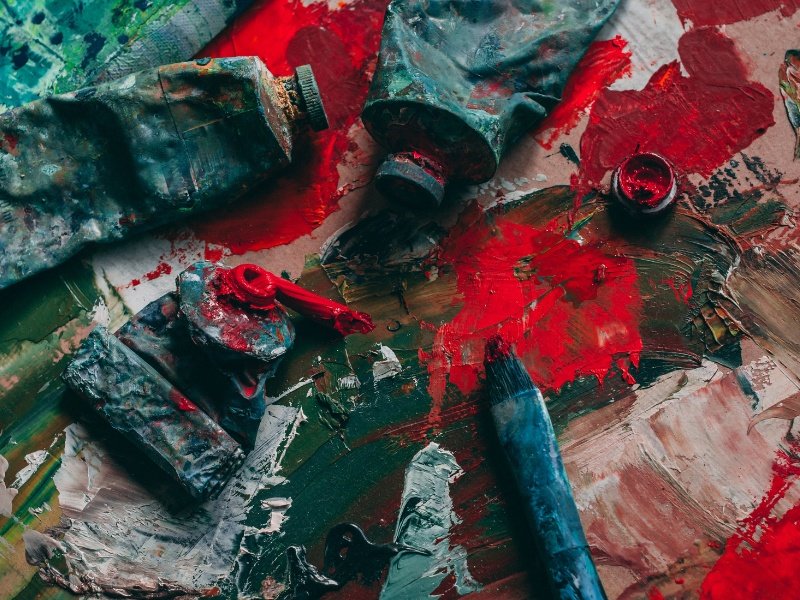
Passion and motivation are key to ongoing abstract art inspiration and creation. Here are some ideas to keep your artistic fire burning:
How to stay passionate and motivated in abstract art
- Set personal challenges: Create goals for yourself, like exploring a new technique each month.
- Join an art community: Connect with other artists for support, feedback, and inspiration.
- Visit galleries and museums: Regularly expose yourself to new art to get your creative juices flowing.
- Document your journey: Keep a journal or blog about your artistic process to reflect on your growth.
- Celebrate small victories: Acknowledge your progress and improvements, no matter how small.
Developing a routine and environment conducive to creativity
- Create a dedicated workspace: Having a specific area for art-making can help you get into a creative mindset.
- Establish a regular practice: Set aside consistent time for your art, even if it’s just a few minutes each day.
- Minimize distractions: Create an environment that allows you to focus fully on your art.
- Gather inspiration: Keep an inspiration board or folder with images, quotes, or objects that spark your creativity.
- Take care of yourself: Remember that self-care, including rest and nutrition, is key to long-term creativity.
Inspirational quotes and stories from renowned abstract artists
- Wassily Kandinsky: “There is no must in art because art is free.”
- Agnes Martin: “Art is the concrete representation of our most subtle feelings.”
- Mark Rothko: “I’m not an abstractionist. I’m not interested in the relationship of color or form or anything else.”
- Helen Frankenthaler: “There are no rules. That is how art is born, how breakthroughs happen. Go against the rules or ignore the rules. That is what invention is about.”
These quotes remind us that abstract art is a deeply personal and freeing form of expression, encouraging artists to push boundaries and trust their instincts.
Everyday Life as a Source of Inspiration
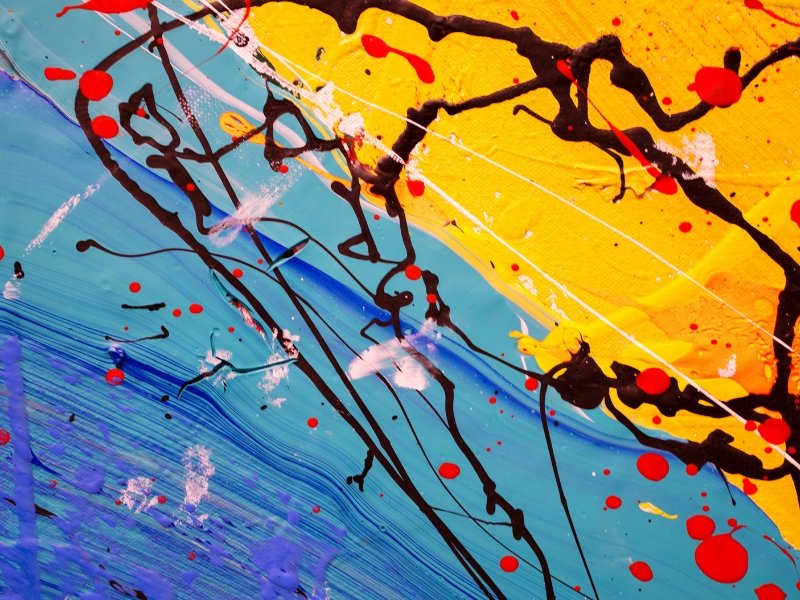
Abstract art inspiration can be found in the most unexpected places of our daily lives. By paying attention and keeping an open mind you can turn mundane experiences into captivating abstract compositions.
Finding abstraction in urban landscapes
- Architectural elements: The lines and shapes of buildings can form the basis of geometric abstractions.
- Street patterns: The grid of city streets or the organic curves of older towns can inspire compositions.
- Reflections: Distorted reflections in windows or puddles can spark ideas for abstract interpretations.
- Urban textures: The varied textures of concrete, metal, and weathered surfaces can be translated into abstract art.
Emotional experiences as catalysts for abstract art
- Color as emotion: Use color to represent different feelings or moods experienced in everyday situations.
- Gestural expression: Translate the physical sensations of emotions into abstract brushstrokes or marks.
- Memory fragments: Create abstract compositions based on snippets of memories or dreams.
- Sensory abstractions: Attempt to visually represent non-visual sensations like sounds, smells, or tastes.
Transforming mundane objects into abstract compositions
- Close-up views: Look at everyday objects from unusual angles or extreme close-ups to find abstract forms.
- Shadow play: Use the shadows cast by ordinary objects as starting points for abstract designs.
- Deconstruction: Break down familiar objects into their basic shapes and colors for abstract reinterpretation.
- Repetition and pattern: Find and emphasize repeating elements in everyday scenes to create abstract patterns.
The Role of Passion in Creating Inspirational Abstract Art
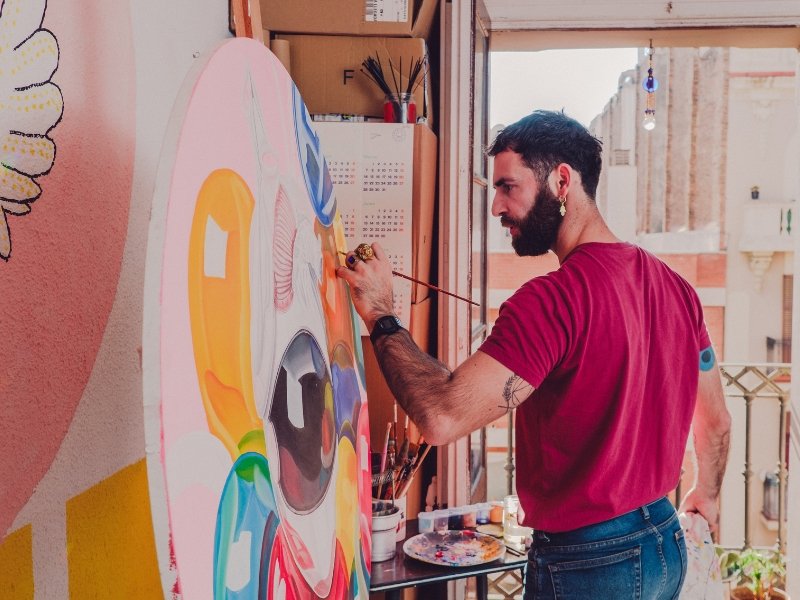
Passion is the key to truly inspirational abstract art. It drives creativity, pushes boundaries, and puts energy and emotion into the work.
Connecting personal experiences to abstract expression
- Emotional mapping: Create abstract “maps” of significant life events or personal journeys.
- Symbolic abstraction: Develop personal symbols to represent important aspects of your life or beliefs.
- Intuitive creation: Allow your subconscious to guide your hand, creating abstractions that reflect your inner state.
- Autobiographical series: Create a series of abstract works that tell your life story or explore a particular period.
Overcoming creative blocks through passion-driven creation
- Free association: Start with random marks or colors and let your passion guide the development of the piece.
- Emotional prompts: Use music, poetry, or memories to evoke strong emotions, then channel these into your art.
- Physical engagement: Use full-body movements or dance to create abstract works, connecting physical and emotional expression.
- Mindfulness practice: Incorporate meditation or mindfulness techniques to tap into your deepest sources of inspiration.
The importance of authenticity in abstract art
- Finding your voice: Develop a style that genuinely reflects your personality and experiences.
- Embracing imperfection: Allow your works to show the “human touch” rather than striving for artificial perfection.
- Honesty in expression: Create art that truly expresses your feelings and ideas, even if it doesn’t conform to current trends.
- Continuous self-reflection: Regularly assess your work and motivations to ensure you’re creating from an authentic place.

Abstract art inspiration is a journey of endless discovery.
From the rhythms of music to the patterns of nature, from cultural traditions to personal emotions, the sources of inspiration are as varied as they are abundant.
Stay open, curious, and passionate and you will always find new ways to express yourself through abstract art.
Remember there are no rules in abstract art. Your uniqueness and experiences are your greatest assets.
Don’t be afraid to experiment, make mistakes, and push the boundaries of your creativity. Whether you’re inspired by the bold gestures of Jackson Pollock, the color fields of Mark Rothko, or the geometric precision of Piet Mondrian, let your passion guide you to create abstract art that is truly yours.
As you continue your artistic journey, keep exploring, keep creating, and above all keep finding joy in the process of abstract art-making.
Your next masterpiece might be inspired by a piece of music, a walk in nature, a poem, a fashion trend or simply the play of light on your kitchen table.
The world is full of abstract art inspiration – just open your eyes, mind, and heart to see it.
Additional Resources
To further your exploration of abstract art inspiration, consider these resources:
- Books:
- “Abstract Art: A Global History” by Pepe Karmel
- “The Art of Abstract Painting” by Rolina van Vliet
- Abstract art exhibitions:
- Check the websites of major modern art museums like MoMA, Tate Modern, and Centre Pompidou for their current and upcoming shows.
- Check your local abstract art exhibitions.
Follow us on Social media Channels for more abstract art and related posts.
Abstract art is a journey of continuous discovery and expression.
Explore more about abstract art on our homepage.
Keep going, keep exploring and above all keep creating.
The world of abstract art inspiration is limitless – what will you create next?

